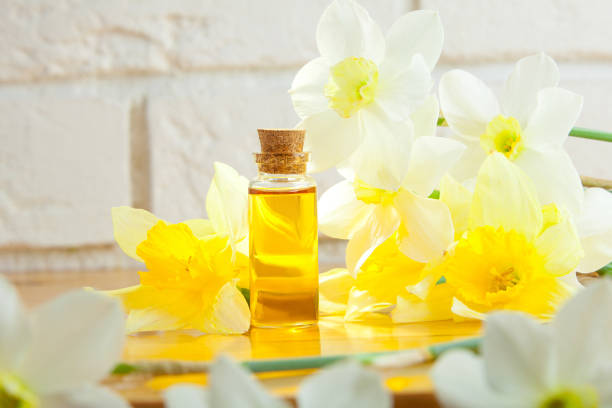Alternative Treatments, Supplements and Herbs
Daffodils Health Benefits
Spring is a time of bright colors and pleasant fragrances. Daffodils, one of the most beautiful flowers in our fields, stands out as a sign of beauty and renewal. In addition to being beautiful, daffodils, which are also called the Narcissus or the Lent Lily, has amazing health benefits hidden. This in-depth article will talk about the long history of daffodils, possible health benefits, and important things to keep in mind. Come with us as we learn more about this beautiful flower and how it can help you feel better.
Historical Significance and Folklore
Daffodils have always been very interesting to people because they are a strong sign of fertility, love, and happiness. The story of Narcissus, the handsome young man who fell in love with his own image, intricately weaves into the history of the daffodil. The gods transformed Narcissus into the daffodil we know today. The daffodil, now representing self-love and self-importance, holds cultural significance in many societies. Additionally, daffodils have been revered in various cultures for their association with faithful lovers and their role as gifts to gods in ancient ceremonies.

The Chemical Composition of Daffodils
A lot of different chemicals make up daffodils, and many of these chemicals are what give them their health benefits qualities. Many people express keen interest in alkaloids like lycorine and galanthamine among these chemicals, particularly focusing on galanthamine due to its potential in treating brain diseases like Alzheimer’s. As an acetylcholinesterase inhibitor, this alkaloid helps keep the chemical acetylcholine levels high. Lycorine is another alkaloid that can be found in daffodils. It has shown promise as an anticancer drug because it stops cancer cells from replicating and causes them to die.

Medicinal Uses and Potential Health Benefits
Treatment for Alzheimer’s
Galanthamine, which comes from flowers, has been used to treat Alzheimer’s disease. Researchers have found that this compound can help improve cognitive performance and ease the symptoms of memory loss and cognitive decline. Researchers are continually studying to learn more about how it works and to enhance its utilization to make treatments more effective.

Cancer-Fighting Properties
Lycorine, a potent chemical found in daffodils, has demonstrated the ability to fight cancer by halting the growth and spread of cancer cells. Early research has shown that it might be useful as an extra treatment for different kinds of cancer. However, more studies and clinical trials are needed to find out if it works and if it is safe to use.
Antibacterial and Antiviral Activity
Various chemicals in daffodils possess antibacterial and antiviral qualities, suggesting their potential use in developing new antibacterial drugs. It looks like these chemicals might work against both gram-positive and gram-negative bacteria, which is good news in the fight against bacteria that are resistant to drugs.
Antifungal and Antimicrobial Effects
Also, daffodils are good for fighting fungal diseases because they are antifungal. In addition, their antimicrobial properties help avoid and treat a number of diseases that are caused by microbes.

Fertility and Reproductive Health
For a long time, daffodils have been linked to pregnancy and good reproductive health. When the flower blooms in the spring, it means that new life has begun and the reproduction cycle has begun. Folk medicine has used daffodils to help people get pregnant and make them more fertile. A bunch of daffodils placed in the bedroom is thought to help with conception and make the surroundings more fertile.
Skin Health and Wound Healing
In the past, daffodils were put on cuts, burns, and other skin problems to help heal them. Their antibacterial qualities help keep you from getting infections and help you heal faster. However, applying flowers to the skin requires care, as they can irritate it and cause other problems in some people.
Cautionary Measures and Toxicity
There are many possible health benefits to flowers, but it is important to be careful and follow the right way to use them. The bulbs and leaves of the daffodil plant, as well as other parts, all contain poisonous chemicals that can harm you if you eat them or treat them wrong. If you eat daffodil blooms, you might feel sick, throw up, have diarrhea, and have stomach pain. If you get daffodil leaves or bulbs on your skin, they can irritate and burn you badly.
Stressing that daffodils should never be used as medicine or eaten without professional advice is crucial. These plants are very poisonous and can even kill you, so be very careful if you want to use them as medicine. Before using daffodils for any kind of healing, you should always talk to a doctor or nurse first.
Conclusion
The stunning beauty and secret healing power of the daffodil have changed the way I see the amazing things in nature. The daffodil has been a symbol of hope and strength throughout history, in addition to being beautiful. Modern medicine uses the daffodil to treat brain diseases and cancer due to its meaning.
As my knowledge of the daffodil’s healing properties grows, I am reminded of the importance of approaching it with both respect and care. Even though its beauty is appealing, it’s important to be aware of and respect the risks that come with its toxins. When you’re aware of the daffodil’s healing powers, enjoying its beauty becomes a more peaceful experience. For me, the daffodil represents not only beauty but also a fine line between enjoying nature’s gifts and being careful with them.


